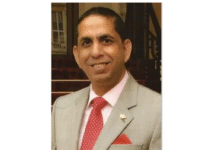Nate Ybanez doodled childish drawings on paper during the court proceedings. His father, bereaved of his wife by the boy’s murderous rampage, had nonetheless arranged his defence. The defence attorney said little about this emotionally detached boy of 16. The prosecution described him as self-indulgent and rebellious. The jury didn’t seem to want to know much more. They took less than three days to complete the trial and return a verdict: guilty. Nate’s sentence for the murder of his mother was life without parole.
The Oishee Rahman case in Bangladesh today is much like the 1998 Nate Ybanez murder case in America. Both are shocking stories of children killing parents. Both raised the obvious question about why anyone would commit such an outrageous wrong. Both initially presented few answers.
Coverage of the murder of Oishee’s parents is frequent but skeletal. Some news account says Oishee killed her parents because “she was nurturing hatred for them,” which begs the question of why she would. Information in one article (for example, that Oishee collaborated with “drug addict friends”) is sometimes contradicted by updates (stories of her confession describe her acting alone). A few stories repeat that Oishee is “psychologically imbalanced,” without further description. Her uncle calls the crime a “mystery.”
Accurate answers into Oishee’s motivation are impossible to glean from media accounts. This is true, however, even for trained mental health professionals. A correct understanding of Oishee’s psychological state requires in-depth evaluation from a psychiatrist or psychologist with knowledge of family violence or forensics. No casual observation would be sufficient basis for judgment of her motives or character.
What is possible now, however, is to review current research on children killing their parents, a crime formally termed parricide. Here is what we know.
It is exceptionally rare for a person to kill his or her mother or father. (It is even rarer to kill both parents.) There is very little risk for most families, and no single case represents a trend.
In the majority of parricide cases, the people who kill their parents are not youth. A study of parricide over a 24-year period (1976-1999) in America shows that eight of every ten perpetrators was over the age of 18.
An American criminologist, Dr. Kathleen Heide, has outlined three types of juvenile parricidal offenders: severe mentally ill children, dangerously antisocial children, and severely abused children. Right now, public response regards Oishee as the first two. Statistically, the last two are more common among youth offenders.
Severe mental illnesses are an uncommon cause of parent murders committed by youth. When a parent is murdered by a mentally ill son or daughter, the offspring is usually an adult. The mental disorder is often psychosis (strange beliefs or paranoid delusions), a condition that typically emerges in early adulthood. Seriously mental ill children are relatively rare, and they are responsible for a small percentage of parricidal murders.
(It also bears saying that many people with mental health problems are not severely ill, and most mentally ill people are non-violent. Only a very small percentage of people with mental health problems are violent. In general, mentally ill people are much more likely to be victims of violence than perpetrators.)
The second type of parricidal murderer is a dangerously antisocial person with an incapacity for ordinary empathy and pro-social behaviour. Murders committed by antisocial youth are often instrumental. That is, they are intended to help the perpetrator reach a goal, such as accessing a parent’s money. Often, a pattern of this kind of dangerous, exploitative behaviour is established well before the murder. These youth account for a significant proportion of parricidal murders, but they are also not the most common kind of killer, either.
The most common type of juvenile parricidal offender is the third one criminologist Heide identified: the severely abused child. Researchers and legal defendants have corroborated her finding that youth who kill parents are often responding to their parents’ long-running violent behaviour. Researchers also describe worsening parental abuse, the child’s beliefs that parental violence was inescapable, and the child’s fears that the parent was going to kill him or her as motives to carry out deadly attacks. Heide and other researchers note some of these youth had been typical “good kids” who, until their lethal outburst, did their best to obey rules.
Heide’s typology appears to leave out drug-induced states. It is true that some drugs can lead to hallucinations, paranoia, or loss of inhibitions, which may lead to violence. But many drugs do not, and drug use alone does not indicate a motivation for murder. Some youth convicted of parricide describe their substance use as an attempt to tolerate ongoing victimisation by numbing their feelings – in other words, a misguided effort towards nonviolence that ultimately failed.
With an accurate, thorough evaluation by a psychiatric specialist, it is impossible to know if Oishee has a severe mental illness, antisocial state of mind, abuse history, drug problem, or some combination of these.
No matter what the cause, cases of children murdering their parents are shocking (particularly in this country, where respect for mother and father is sacrosanct). They are also procedural challenges for police and prosecutors. A change in the law redefining the age of adulthood to 18 years complicates Oishee’s case. But appropriately questioning a child, ensuring mental health assessment is correct, and investigating claims of abuse are also always important. None of these things are easy.
The quality of police procedures in Oishee’s case are uncertain. One news item says Oishee confessed after a “five-day grilling in police custody,” but mentions nothing about how and why such a lengthy interrogation was conducted against a teenage girl. Thus far, there are few reports on whether Oishee’s rights to legal counsel, information about her case, mental health assessment and treatment, or even physical safety are being upheld – and how deprivations might contribute to the “psychologically imbalanced” state described by the press.
Under such circumstances, we may never have a chance to understand her underlying condition or provide justice for the deaths of her mother and father.
The case of Nate Ybanez illustrates what happens when assessment of juvenile parricidal offenders is incorrect. Just 16 at the time of the murder, he had little say in the defence his father arranged. Years later, when a co-defendant appealed his own life sentence, attorneys and psychologists began to question Ybanez. They found scars on his back from his parents’ repeated beatings. Eventually, he admitted both parents had also sexually abused him starting at the age five. His profound suffering precipitated the attack in which he impulsively killed his mother.
But during the trial that ended in his harsh sentence, his father had made sure the issue never came up in court. Ybanez, the proverbial “good kid,” was labelled antisocial, while his father, whose abuse had included an attempt to murder his son, received no punishment whatsoever.
To date, every attempt to get the US courts to reconsider Nate’s life sentence has failed.
What will happen with Oishee’s case?
Source: bdnews24










